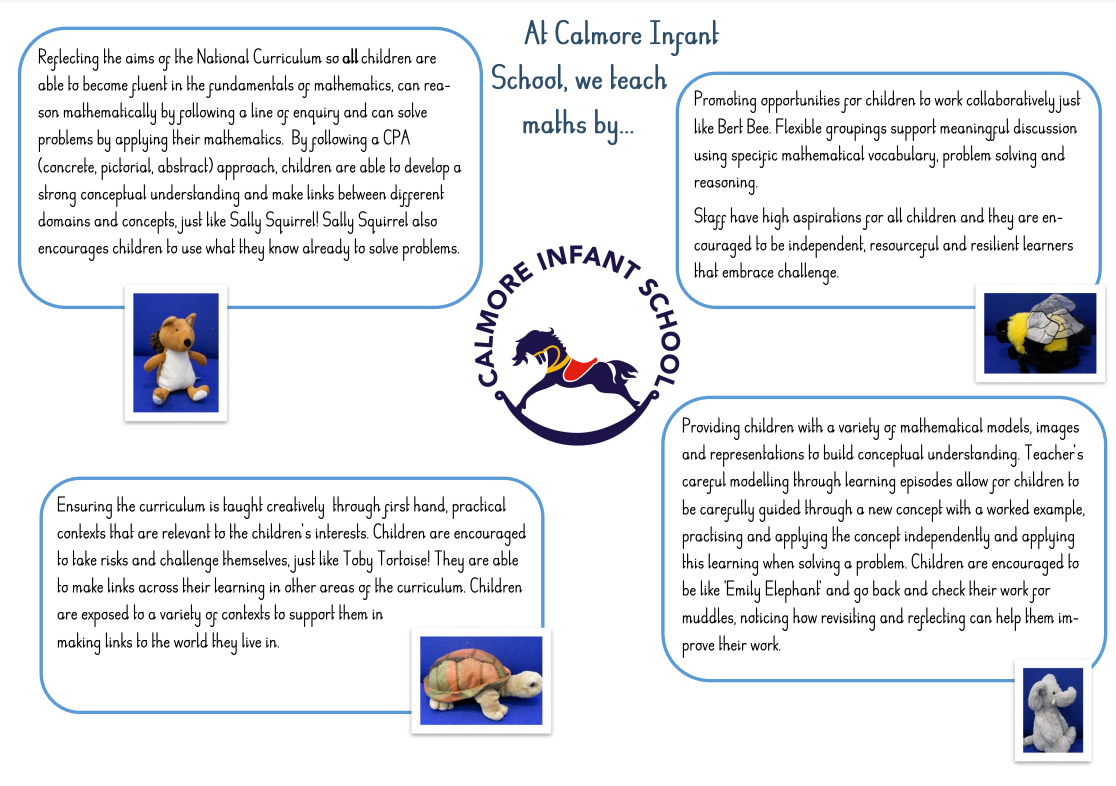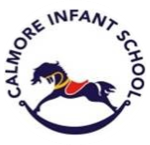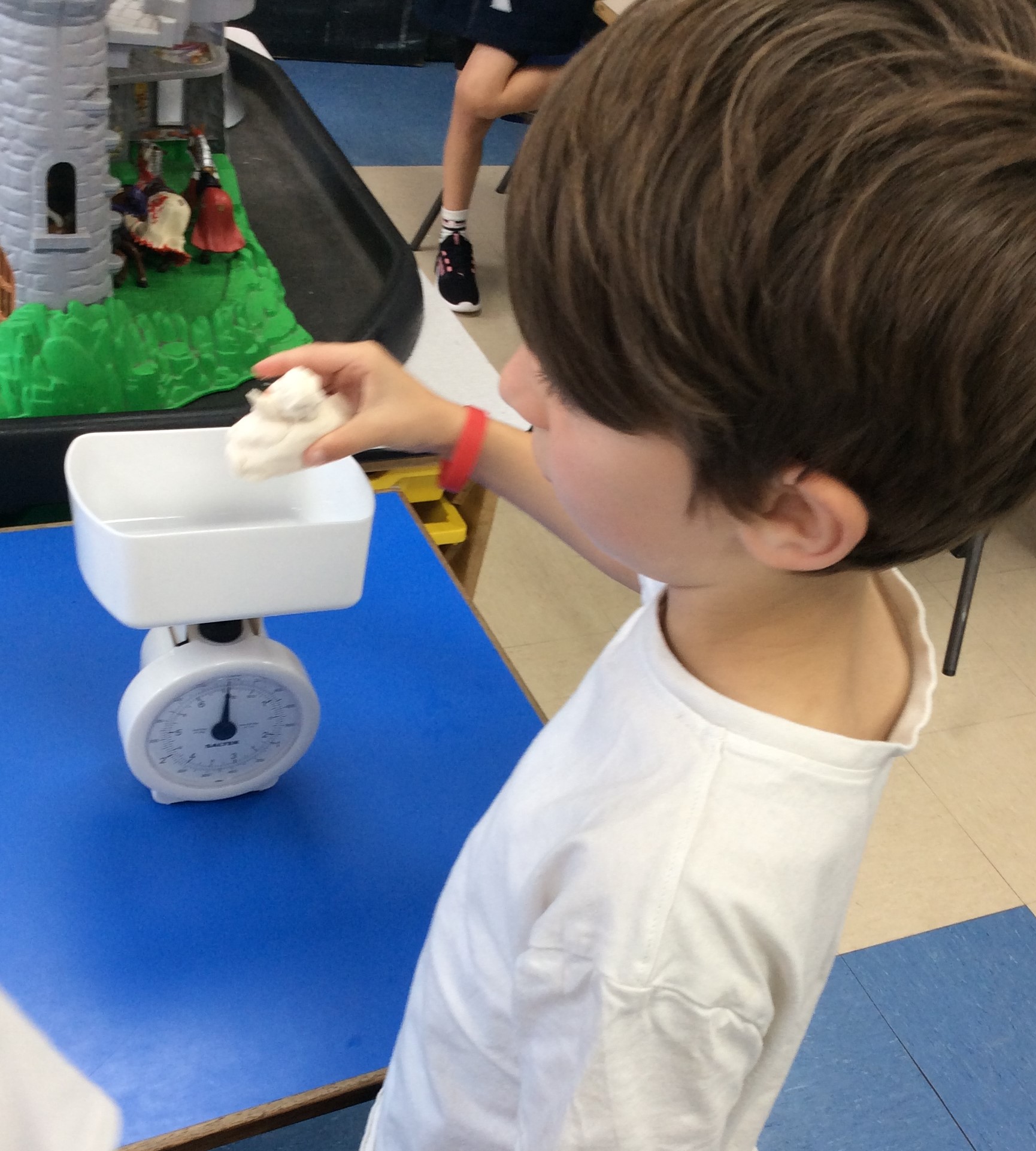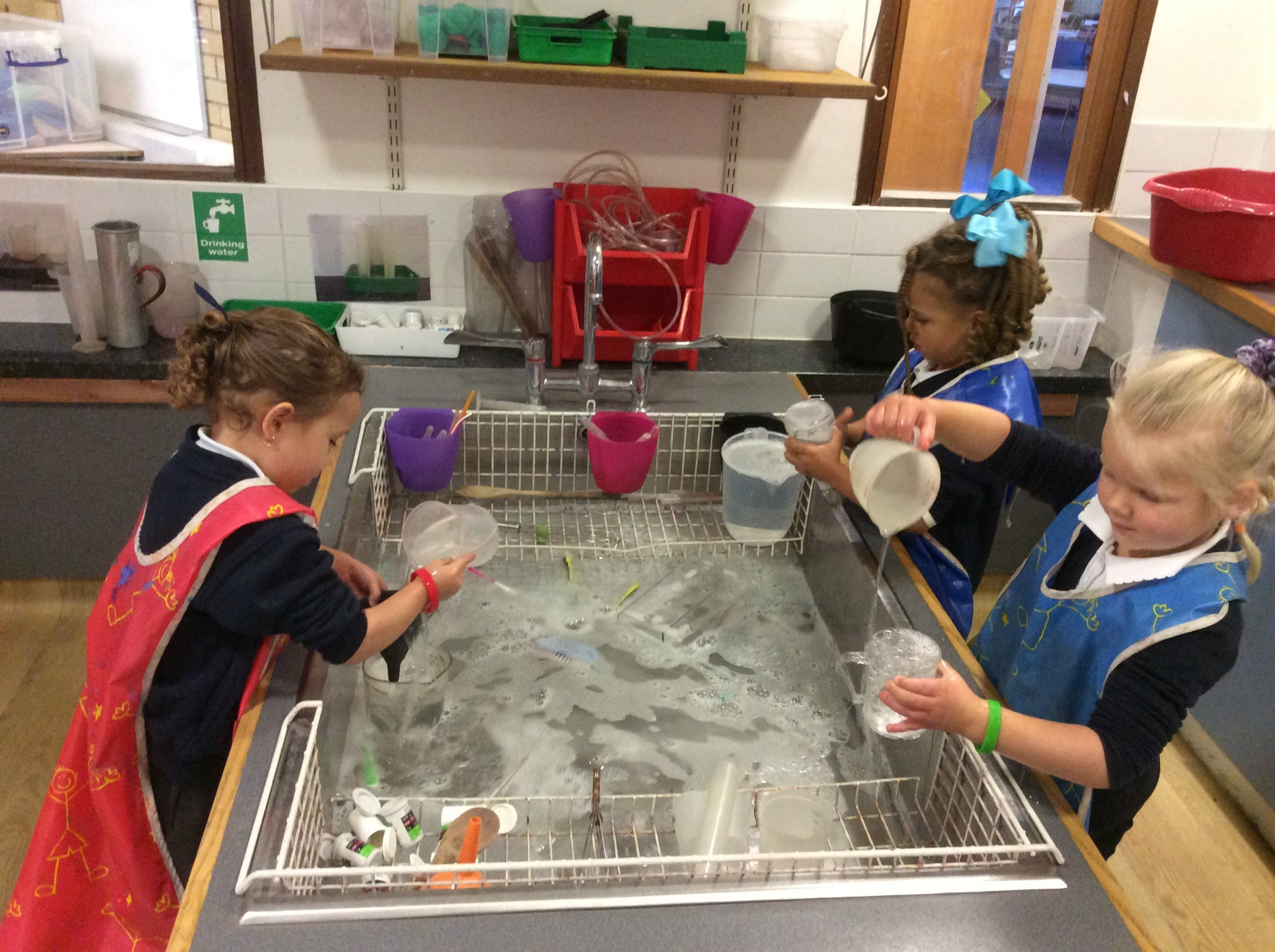Maths
Mathematics at Calmore Infant School

The aims of the Calmore curriculum for mathematics are that all pupils:
- Become fluent in the fundamentals of mathematics
- Reason mathematically by following a line of enquiry
- Can solve problems by applying their mathematics
Maths at Calmore Infant is creative and taught through first hand, practical contexts that are relevant to the children’s interests. Children are encouraged to take risks, challenge themselves and make links across their learning in other areas of the curriculum.
Children use a variety of real life resources to count, group and order such as sticks, acorns, buttons as well as more structured specialised mathematical equipment including numicon, diennes and tens frames to support their learning. There is a strong emphasis on the use of multi-representation using a variety of mathematical resources. Each day, in addition to the taught maths sessions all of our children will take part in 4 rapid recall mental maths questions, focussing on shape & space, money, time and number. This ensures that children constantly recall, refresh and reinforce their learning.
What does maths look like at Calmore Infant School?
EYFS
In the Early Years Foundation Stage, our Calmore maths curriculum is designed by our team, depending on the needs of our cohort. We use ideas and inspiration from EYFS expectations, practice and pedagogy alongside delivery ideas from the White Rose Scheme of Learning. From this, children receive adult-led sessions that focus on developing mastery of the mathematical concepts identified in the Early Years Framework.
In addition to this, each adult led session begins with three to four questions based on time, money, counting and shape. This continues into KS1 and is designed to aid children with rapid recall of mathematical facts and familiarity problem-solving in these areas.
In the Early Years Foundation Stage, there is a Mathematics resource area that is set up by the class teacher, which children have access to as part of their child-initiated activities. In addition to this there are opportunities for mathematical exploration across all areas of the Foundation Stage learning environment, using a range of natural and/or ‘real-life’ resources, such as counting out plates in the role-play corner, or sorting acorns and leaves in the outdoor area.
KS1
In Years One and Two, the Calmore maths curriculum is based upon the Hampshire Maths Scheme of Learning. We use a cyclical approach to teaching in order to develop mastery of mathematical concepts. During their daily sessions, the children revisit previously taught skills and concepts through retrieval tasks and enjoy answering 4 mental maths questions that are designed to ensure they are fluent in basic place value, time, money and shape.
In Year One, sessions are delivered through a mixture of whole class teaching and group work. Children are placed in mixed ability groups to promote growth mindset and teachers have high expectations for all children and all children are sufficiently challenged. Children are encouraged to be independent learners and enjoy selecting resources to support their learning. The working walls are also a great aid in ensuring children have access to earlier parts of the learning journey that helps them to build upon their knowledge.
In Year Two, children are taught whole class and enjoy continuing to use concrete resources to support understanding of more complex concepts. Children enjoy applying a variety of taught strategies to solve problems and use multi-representation accurately to demonstrate their depth of understanding. Maths problems are presented using a multi-context approach to ensure children are confident in applying their skills to a variety of contexts.
KS1 – Progression in Mathematics
Subject Content KS1
The principal focus of mathematics teaching in key stage 1 is to ensure that pupils develop confidence and mental fluency with whole numbers, counting and place value. This should involve working with numerals, words and the four operations, including with practical resources [for example, concrete objects and measuring tools].
At this stage, pupils should develop their ability to recognise, describe, draw, compare and sort different shapes and use the related vocabulary. Teaching should also involve using a range of measures to describe and compare different quantities such as length, mass, capacity/volume, time and money.
By the end of year 2, pupils should know the number bonds to 20 and be precise in using and understanding place value. An emphasis on practice at this early stage will aid fluency.
Pupils should read and spell mathematical vocabulary, at a level consistent with their increasing word reading and spelling knowledge at key stage 1.
Progression in Written Methods for Multiplication and Division
This document shows the progression in written methods for multiplication and division that are used in our school. Progression in multiplication and division
Progression in the use of the number line
Developing the number line as a visual image to support children’s understanding of the number system and their strategies for calculation. Progression in the use of the number line




